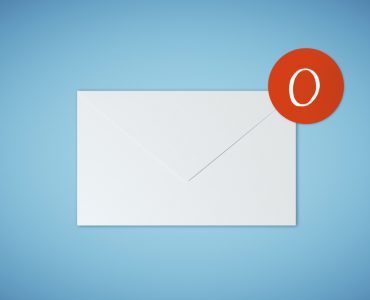Do you find that your inbox easily gets out of hand? Do you wish you could organize your messages more efficiently so you could keep up with incoming mail and find things more easily? These tips will help you to develop a system that puts you back in control.
Think of your inbox as temporary
If you don’t have time to manage all the messages you receive in a day, it’s all too easy to leave them sitting in your inbox for later. That’s an easy way to end with an inbox that’s thousands of messages deep. Think of your inbox as a place that messages travel through, not a place where they rest, and aim to have it empty by the end of each day. Each incoming message should either be replied to, forwarded, deleted or moved to another folder.
Separate messages that need action
Not every email can be responded to straightaway – sometimes you will need to take an action first, such as reading a report or confirming a piece of information with a colleague. Messages like this should be moved to a specific folder which you should also aim to keep as empty as possible, but which allows for messages to remain for a few hours or days, as required. This makes it easy to check and remind yourself of what you need to get done.
Archive old messages by subject
Instead of letting old messages sit in your inbox once they’re been processed, archive them by moving them into appropriate folders categorized by subject. It’s okay to have a miscellaneous folder for those odd messages that don’t quite fit in the usual places. Most email systems will let you search across all folders, so this won’t slow down retrieval. In fact, it will make it easier to search by subject and date when you can’t remember the sender or any useful keywords.
Cut down on incoming messages
In order to make email management work over time, you need to avoid becoming overwhelmed by incoming messages. The first step in this is to see if you can improve your spam filtering, while acknowledging that overzealous filtering can cause problems of its own – whitelisting can help with this. You should also identify any mailing lists you’re on that you’re not really using any more and unsubscribe accordingly.
Speed up your replies
To speed up the processing of messages through your inbox, it helps to speed up replies. Keep them short wherever you can and don’t be shy about getting straight to the point – the busy people you’re sending them to will appreciate it. Use template replies where it makes sense to do so and keep paragraphs that you use often where they can easily be copied and pasted into place.
It takes time to get into good habits but following these steps will put you back in the driving seat. Your email will no longer be putting you under pressure – you’ll be in control.













